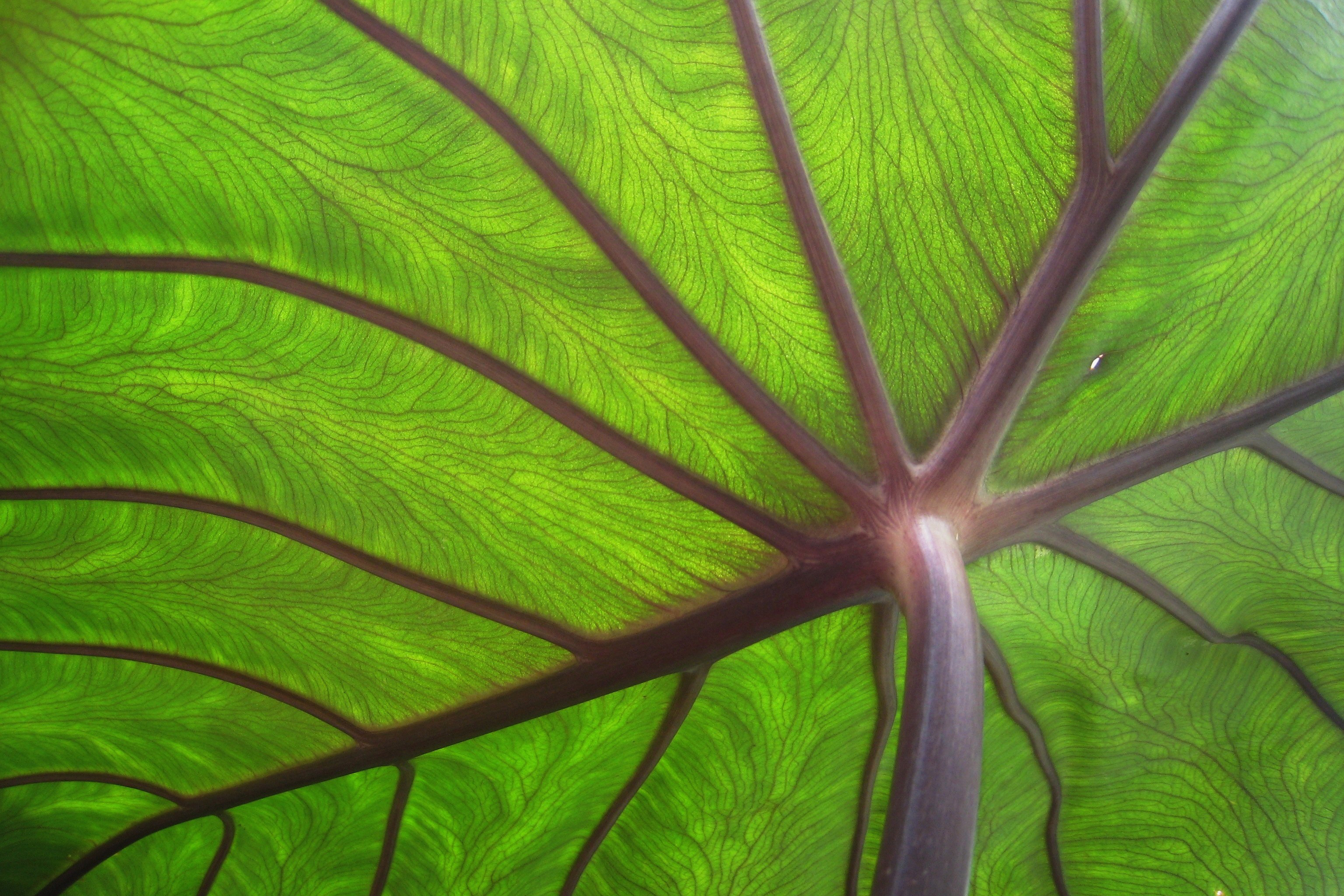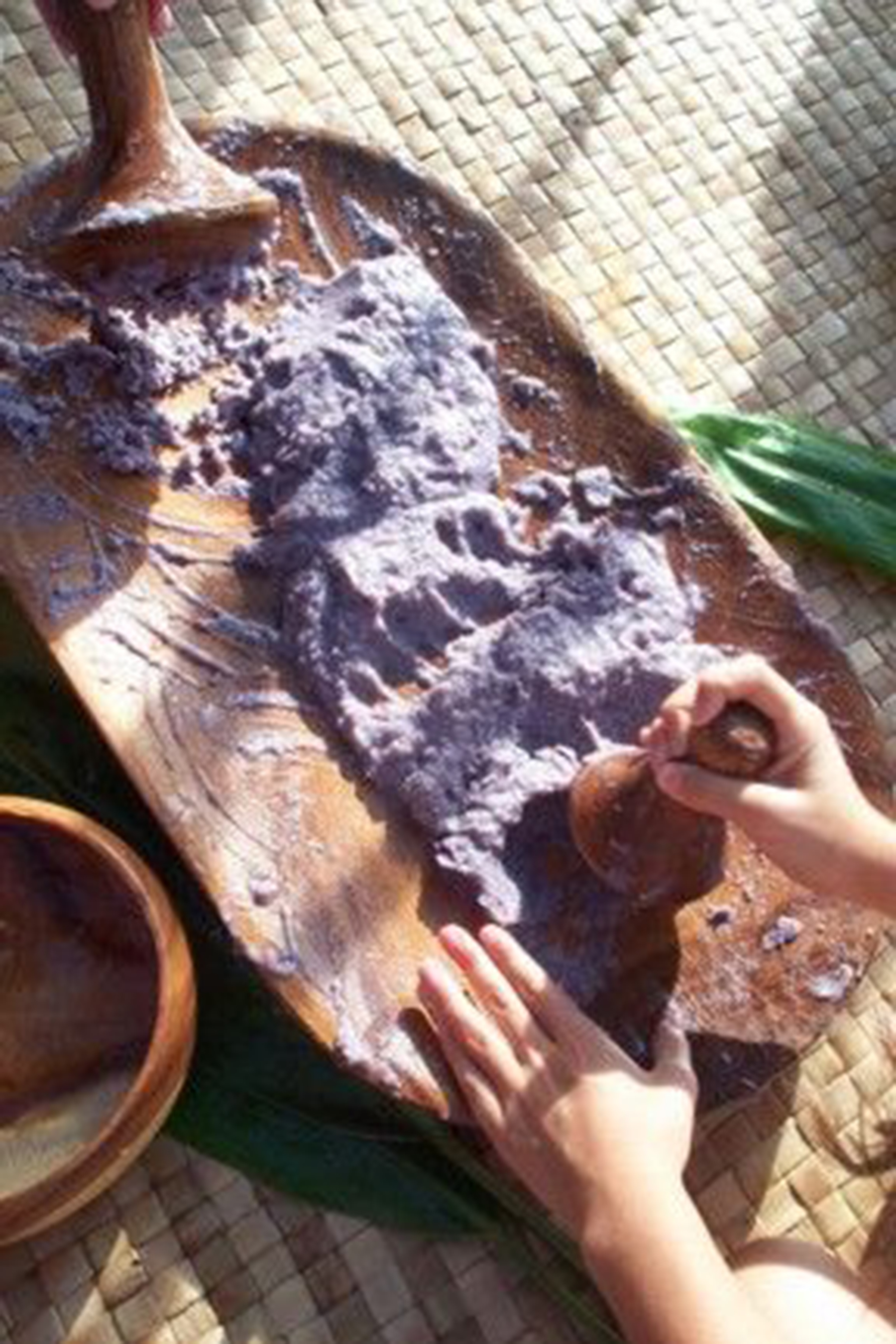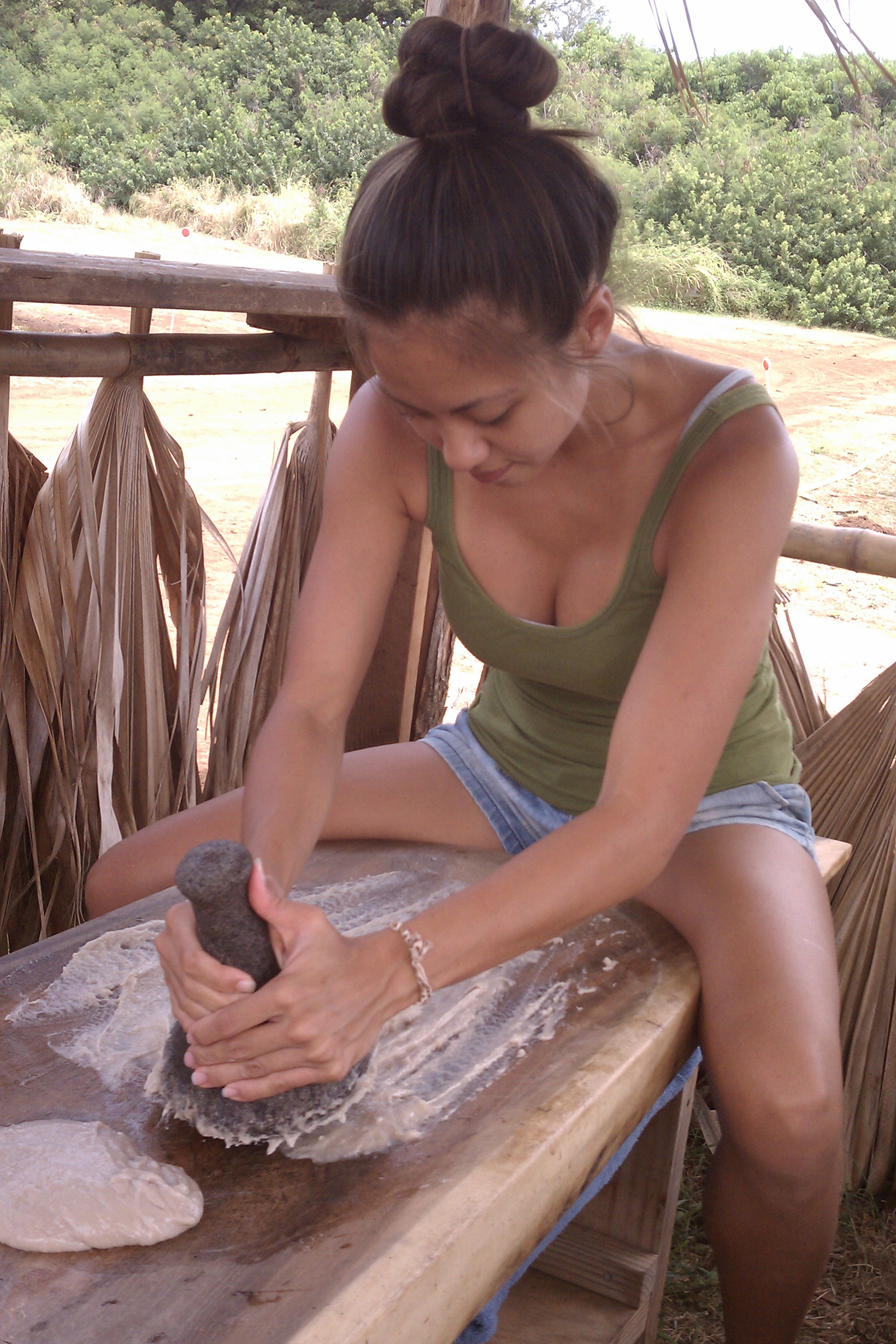History -
Kalo was though to be one of the greatest life forces. It came with the first Polynesian settlers to Hawaiʻi. There over 300 different varieties of kalo.
Moʻolelo -
According to the Kumulipo (the ancient Hawaiian creation chant,) Papa (Earth Mother) and Wākea (Sky Father) had a son who was stillborn. The first kalo plant grew from where they had buried him. Their second child, Haloa, was the first man. That is why the ancient Hawaiians thought of Kalo as their older brother.



